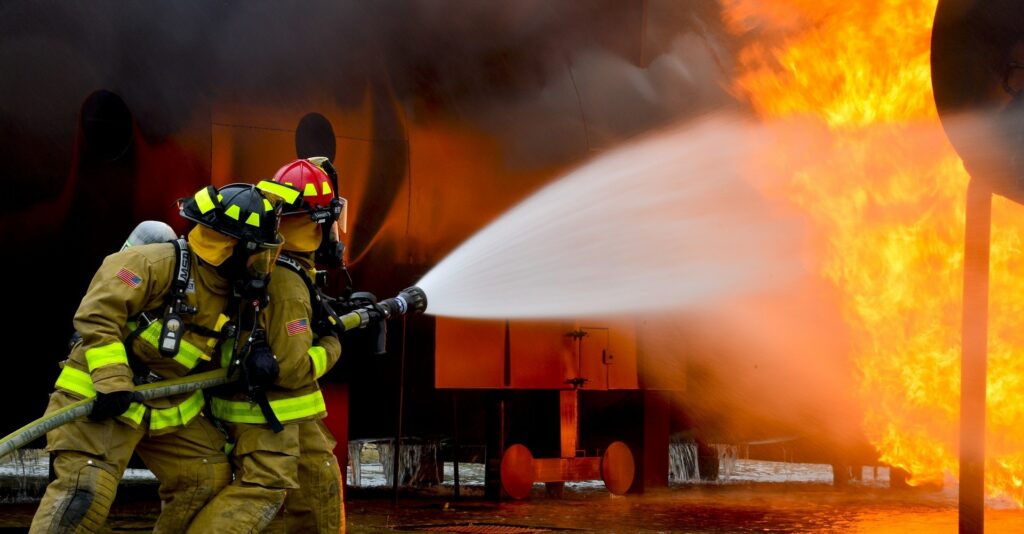
Business owners, what would you do if a fire happened in your building? Do you and your employees know who to contact, where to go and how to safely escape? Do you have operational guidelines in place to prevent fires? How will your business recover after a fire? Fire Prevention Week, which takes place October 9-15 this year, serves as a good reminder that every business needs a fire-safety plan, whether you have two or 100+ employees.
The US Fire Administration is marking the 100th anniversary of Fire Prevention Week in 2022. According to the agency, 17,000 fires take place in offices and stores across the United States each year. These fires result in over $800 million in property damage. More specifically, USFA data showed that in 2019 (latest data available), the leading cause of office and store fires was cooking (32.3%), followed by electrical malfunction (10.9%), heating (8.0%), other “unintentional, careless” causes (7.9%), and appliances (7.7%).
As you can see, many of these causes are similar to those for home fires. As such, much of the same safety advice applies. For example, both families at home — and employees in the workplace — should practice common-sense safety precautions in daily routines, know what to do and who to call if there’s a fire, and plan and practice using multiple routes to escape the building.
But a place of business can be a lot more complex than a home, with special equipment in use, products being stored, employees coming and going and countless opportunities for safety practices to fall by the wayside. Even if your business comprises only two or three employees, it’s still important to have a detailed fire-safety plan and conduct employee training and fire drills regularly.
Elements of a fire-safety plan
The USFA shares practical steps for both employers and employees on how to prevent a workplace fire as well as what to do in a fire, who to notify, and how to plan and practice using multiple escape routes (see this infographic).
For even more specifics, Travelers provides an excellent outline for developing a comprehensive fire-safety plan. Best practices include educating employees on risks, prevention and what to do in case of a fire; assigning key personnel to take charge in an emergency; conducting regular fire drills; performing regular maintenance on fire-detection and protection systems; and developing plans to communicate and work with the local fire department (such as posting and providing floor plans and developing systems to account for, and locate, employees in an emergency situation).
Another important step is to make sure you have the right business insurance plan to cover losses in equipment, products or your building. Call your Bradish agent to review your plan and ensure you have the appropriate type and amount of coverage. Now is the time to take a close look at how your business operates — and what you can do to reduce the possibility of a fire, respond effectively in an emergency and recover afterward. It’s time to create, review or improve your fire-safety plan.
by Kris A. Mainellis